Editorial Board
Our Editorial Board Members are active researchers recognized as experts in their field. They handle manuscripts within their areas of expertise, overseeing all aspects of the peer review process from submission to acceptance.
Editorial Board Members work closely with our in-house editors to ensure that all manuscripts are subject to the same editorial standards and journal policies. For past members of our Editorial Board, please see our Editorial Board Alumni page.
Zakaria Al Balushi, PhD, University of California, Berkeley, USA
orcid.org/0000-0003-0589-1618
Research areas: Electronic Materials Synthesis, Nanomaterials, Quantum Materials
 Zakaria Y. Al Balushi is an Assistant Professor in Materials Science and Engineering at University of California, Berkeley, and a Faculty Scientist in the Materials Sciences Division at Lawrence Berkeley National Labs. Zakaria received his PhD in Materials Science and Engineering at the Pennsylvania State University where he worked on the epitaxy of group-III nitride thin films and nanostructures, and later on was a Resnick Prize Postdoctoral Fellow in Applied Physics and Materials Science at the California Institute of Technology, where he worked on photonics in 2D Materials. At University of California, Berkeley, his research focuses on electronic materials synthesis of thin films (compound semiconductors heterostructures, quantum materials, etc.) and nanostructures (2D materials, nanowires, quantum dots, etc.) using a variety of chemical vapor deposition techniques.
Zakaria Y. Al Balushi is an Assistant Professor in Materials Science and Engineering at University of California, Berkeley, and a Faculty Scientist in the Materials Sciences Division at Lawrence Berkeley National Labs. Zakaria received his PhD in Materials Science and Engineering at the Pennsylvania State University where he worked on the epitaxy of group-III nitride thin films and nanostructures, and later on was a Resnick Prize Postdoctoral Fellow in Applied Physics and Materials Science at the California Institute of Technology, where he worked on photonics in 2D Materials. At University of California, Berkeley, his research focuses on electronic materials synthesis of thin films (compound semiconductors heterostructures, quantum materials, etc.) and nanostructures (2D materials, nanowires, quantum dots, etc.) using a variety of chemical vapor deposition techniques.
Lab webpage
Maria Rosa Antognazza, PhD, Italian Institute of Technology, Italy
orcid.org/0000-0003-4599-2384
Research areas: Organic bioelectronics, biomaterials, conjugated polymers
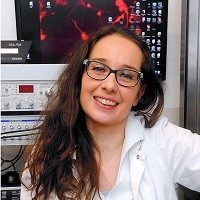 Maria Rosa Antognazza is a physicist by background and is currently a research technologist at the Italian Institute of Technology. Her main research interests are on the development of biophotonic devices for biology and medicine applications. She has expertise in the characterization and implementation of bio-hybrid interfaces based on conjugated polymers, studied by optical, electronic, photo-electrochemical, ion imaging and electrophysiology techniques. Optical and spectroscopic studies of organic semiconductors complete her profile. She is a coordinator and principal investigator in several European and national projects, in the emerging field of organic bioelectronics. In 2019 she was awarded an ERC-Starting Grant.
Maria Rosa Antognazza is a physicist by background and is currently a research technologist at the Italian Institute of Technology. Her main research interests are on the development of biophotonic devices for biology and medicine applications. She has expertise in the characterization and implementation of bio-hybrid interfaces based on conjugated polymers, studied by optical, electronic, photo-electrochemical, ion imaging and electrophysiology techniques. Optical and spectroscopic studies of organic semiconductors complete her profile. She is a coordinator and principal investigator in several European and national projects, in the emerging field of organic bioelectronics. In 2019 she was awarded an ERC-Starting Grant.
Lab webpage
Ayse Asatekin, PhD, Tufts University, USA
orcid.org/0000-0002-4704-1542
Research areas: Polymer self-assembly, membranes, water treatment, zwitterions
 Ayse Asatekin is an Associate Professor in the Chemical and Biological Engineering Department, and the Steve and Kristen Remondi Faculty Fellow, at Tufts University. She completed her Ph.D. in Chemical Engineering at the Massachusetts Institute of Technology in Polymer Science and Technology, followed by a post-doc in Karen Gleason’s group. She then co-founded Clean Membranes, Inc., where she worked as Principal Scientist. Her research at Tufts focuses on the design of self-assembling polymers for filtration membranes with enhanced selectivity and fouling resistance. Her group also utilizes polymer science for energy storage and biomaterials applications. She is the Senior Scientific Advisor to ZwitterCo, Inc., a start-up commercializing membranes developed in her lab. She received the NSF CAREER Award in 2016.
Ayse Asatekin is an Associate Professor in the Chemical and Biological Engineering Department, and the Steve and Kristen Remondi Faculty Fellow, at Tufts University. She completed her Ph.D. in Chemical Engineering at the Massachusetts Institute of Technology in Polymer Science and Technology, followed by a post-doc in Karen Gleason’s group. She then co-founded Clean Membranes, Inc., where she worked as Principal Scientist. Her research at Tufts focuses on the design of self-assembling polymers for filtration membranes with enhanced selectivity and fouling resistance. Her group also utilizes polymer science for energy storage and biomaterials applications. She is the Senior Scientific Advisor to ZwitterCo, Inc., a start-up commercializing membranes developed in her lab. She received the NSF CAREER Award in 2016.
Lab webpage
Bilge Baytekin, PhD, Bilkent University, Turkey
orcid.org/0000-0002-3867-3863
Research areas: Electrostatics, mechanochemistry, soft robotics
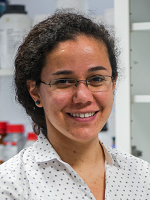 Bilge Baytekin is an Assistant Professor in the Chemistry Department of Bilkent University. She received her Ph.D. from Freie Universitat Berlin and pursued her postdoctoral studies (2009-2014) at Northwestern University. Her research interests include static electricity, organic and polymer mechanochemistry, smart materials, and soft robotics. She is a recipient of the Rising Star Award from the Electrostatics Society of America.
Bilge Baytekin is an Assistant Professor in the Chemistry Department of Bilkent University. She received her Ph.D. from Freie Universitat Berlin and pursued her postdoctoral studies (2009-2014) at Northwestern University. Her research interests include static electricity, organic and polymer mechanochemistry, smart materials, and soft robotics. She is a recipient of the Rising Star Award from the Electrostatics Society of America.
Lab webpage
Andreja Benčan Golob, PhD, Jožef Stefan Institute, Slovenia
orcid.org/0000-0002-2116-3779
Research areas: piezoelectrics, complex oxides, electron microscopy
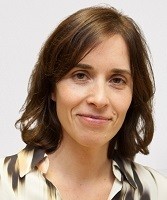 Andreja Benčan Golob is a senior scientist at Electronic Ceramics Department, Jožef Stefan Institute and Associate Professor at the Jožef Stefan International Postgraduate School, Ljubljana, Slovenia. She received her PhD in 2002 in the field of materials at the Faculty of Chemistry and Chemical Technology at the University of Ljubljana, Slovenia. Her main research interest is the synthesis and characterisation of piezoelectric, ferroelectric and multiferroic oxide materials in single crystal, bulk or thin and thick film form. Her research focuses on structural investigations of various functional materials, with emphasis on environmentally friendly piezoelectric ceramic materials, using scanning and transmission electron microscopy and microanalysis techniques down to the atomic level.
Andreja Benčan Golob is a senior scientist at Electronic Ceramics Department, Jožef Stefan Institute and Associate Professor at the Jožef Stefan International Postgraduate School, Ljubljana, Slovenia. She received her PhD in 2002 in the field of materials at the Faculty of Chemistry and Chemical Technology at the University of Ljubljana, Slovenia. Her main research interest is the synthesis and characterisation of piezoelectric, ferroelectric and multiferroic oxide materials in single crystal, bulk or thin and thick film form. Her research focuses on structural investigations of various functional materials, with emphasis on environmentally friendly piezoelectric ceramic materials, using scanning and transmission electron microscopy and microanalysis techniques down to the atomic level.
Lab webpage
Steven Caliari, PhD, University of Virginia, USA
orcid.org/0000-0002-7506-3079
Research areas: Biomaterials, regenerative medicine, mechanobiology
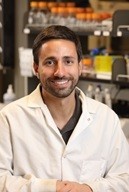 Steven Caliari joined the University of Virginia in 2016 as an Assistant Professor in the Department of Chemical Engineering with a secondary appointment in the Department of Biomedical Engineering. Previously he was a National Institutes of Health (NIH) Postdoctoral Fellow in the Department of Bioengineering at the University of Pennsylvania. Steven completed his B.S. in Chemical Engineering at the University of Florida and received both his M.S. and Ph.D. in Chemical Engineering from the University of Illinois at Urbana-Champaign. His lab designs, synthesizes, and characterizes new biomaterials to explore the dynamic interplay between cells and their microenvironment, applying these platforms to address fundamental human health challenges in understanding disease and engineering tissues. Steven recently received the NIH Maximizing Investigators’ Research Award.
Steven Caliari joined the University of Virginia in 2016 as an Assistant Professor in the Department of Chemical Engineering with a secondary appointment in the Department of Biomedical Engineering. Previously he was a National Institutes of Health (NIH) Postdoctoral Fellow in the Department of Bioengineering at the University of Pennsylvania. Steven completed his B.S. in Chemical Engineering at the University of Florida and received both his M.S. and Ph.D. in Chemical Engineering from the University of Illinois at Urbana-Champaign. His lab designs, synthesizes, and characterizes new biomaterials to explore the dynamic interplay between cells and their microenvironment, applying these platforms to address fundamental human health challenges in understanding disease and engineering tissues. Steven recently received the NIH Maximizing Investigators’ Research Award.
Lab webpage
Rona Chandrawati, PhD, University of New South Wales, Australia
orcid.org/0000-0002-9780-8844
Research areas: drug delivery, sensors, nanomaterials
 Rona Chandrawati is a Scientia Associate Professor and National Health and Medical Research Council Emerging Leadership Fellow at the School of Chemical Engineering, The University of New South Wales, Australia. She obtained her Ph.D. from The University of Melbourne in 2012 and was then a Marie Curie Fellow at Imperial College London before returning to Australia in 2015 to head the Nanotechnology for Food and Health Laboratory. Her research interests are focused on the development of nanoparticles, polymers, natural enzymes and enzyme mimics for drug delivery and sensing.
Rona Chandrawati is a Scientia Associate Professor and National Health and Medical Research Council Emerging Leadership Fellow at the School of Chemical Engineering, The University of New South Wales, Australia. She obtained her Ph.D. from The University of Melbourne in 2012 and was then a Marie Curie Fellow at Imperial College London before returning to Australia in 2015 to head the Nanotechnology for Food and Health Laboratory. Her research interests are focused on the development of nanoparticles, polymers, natural enzymes and enzyme mimics for drug delivery and sensing.
Lab webpage
Johan Christensen, PhD, Madrid Institute for Advanced Studies, Spain
orcid.org/0000-0002-1604-250X
Research areas: Metamaterials, topological insulators
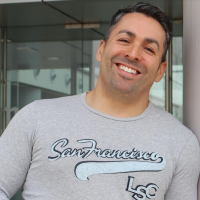 Johan Christensen is a senior researcher at the Madrid Institute for Advanced Studies (IMDEA). He is interested in wave physics and the theoretical description and numerical modelling of acoustic and mechanical metamaterials and topological insulators. In 2010, he was awarded his PhD at the Autonomous University of Madrid. He obtained various awards and grants including a Marie-Curie Doctorate fellowship, two Carlsberg fellowships, the Young Elite Researcher Prize from the Danish Research Council, and a Ramon y Cajal fellowship. In 2016 he received a Starting Grant from the European Research Council, which aims to support promising up-and-coming research leaders in Europe. In 2019 he received the Phononics Young Investigator award from the International Phononics Society.
Johan Christensen is a senior researcher at the Madrid Institute for Advanced Studies (IMDEA). He is interested in wave physics and the theoretical description and numerical modelling of acoustic and mechanical metamaterials and topological insulators. In 2010, he was awarded his PhD at the Autonomous University of Madrid. He obtained various awards and grants including a Marie-Curie Doctorate fellowship, two Carlsberg fellowships, the Young Elite Researcher Prize from the Danish Research Council, and a Ramon y Cajal fellowship. In 2016 he received a Starting Grant from the European Research Council, which aims to support promising up-and-coming research leaders in Europe. In 2019 he received the Phononics Young Investigator award from the International Phononics Society.
Lab webpage
Shelly Conroy, PhD, Imperial College London, UK
orcid.org/0000-0002-6658-1819
Research areas: Multiferroics, functional oxides, nitrides, thin films, electron microscopy
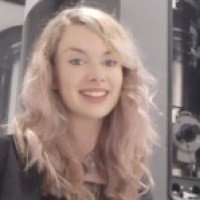 Dr Shelly Conroy is an Associate Professor of Functional Thin Films and Microscopy at Imperial College London, and a Royal Society Tata University Research Fellow. Her research focuses on designing quantum and energy thin film materials at the atomic-scale using in-situ transmission electron microscopy (TEM) and atom probe tomography techniques. Dr Conroy worked at Pacific Northwest National Laboratory as a permanent staff scientist, before joining the Department of Physics, University of Limerick, Ireland as a Science Foundation Ireland Analog Devices Research Fellow (thin film growth and in-situ TEM for spintronic based devices). Dr Conroy holds a PhD in III-N thin film growth for optoelectronic and high electron mobility transistor device applications and in-situ TEM from Tyndall National Institute and University College Cork, Ireland. Dr Conroy’s Royal Society grant ‘Improper Ferroelectric Domain Wall Engineering for Dynamic Electronics’ is focused on thin film growth of the ferroelectric/ferroelastic Boracites and in-situ 4D-STEM.
Dr Shelly Conroy is an Associate Professor of Functional Thin Films and Microscopy at Imperial College London, and a Royal Society Tata University Research Fellow. Her research focuses on designing quantum and energy thin film materials at the atomic-scale using in-situ transmission electron microscopy (TEM) and atom probe tomography techniques. Dr Conroy worked at Pacific Northwest National Laboratory as a permanent staff scientist, before joining the Department of Physics, University of Limerick, Ireland as a Science Foundation Ireland Analog Devices Research Fellow (thin film growth and in-situ TEM for spintronic based devices). Dr Conroy holds a PhD in III-N thin film growth for optoelectronic and high electron mobility transistor device applications and in-situ TEM from Tyndall National Institute and University College Cork, Ireland. Dr Conroy’s Royal Society grant ‘Improper Ferroelectric Domain Wall Engineering for Dynamic Electronics’ is focused on thin film growth of the ferroelectric/ferroelastic Boracites and in-situ 4D-STEM.
Personal website
Larisa Florea, PhD, Trinity College Dublin, Ireland
orcid.org/0000-0002-4704-2393
Research areas: Polymers, micro-fabrication, sensors
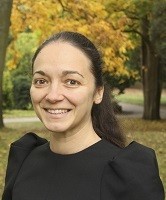 Larisa Florea is an Assistant Professor in Chemistry at Trinity College Dublin and the AMBER Research Centre for Advanced Materials and BioEngineering Research, Ireland. Larisa studied organic chemistry and chemical engineering at University Politehnica in Timisoara, Romania (B.Sc. Hons). In 2009 she joined the Adaptive Sensors Group at Dublin City University where she earned her Ph.D. in materials chemistry under the supervision of Prof. Dermot Diamond. Larisa began her postdoctoral career at the Insight Centre for Data Analytics, and in 2016 she achieved a senior position as Team Leader in Materials Chemistry and Microfluidics. Since starting her independent career at Trinity College Dublin, Larisa has been the recipient of several awards, including an ERC Starting Grant (2018) and an Irish Research Council – Laureate Starting Grant (2018). Larisa’s research comprises several distinct strands in the soft matter realm, including development of new stimuli-responsive polymers, 3D fabrication technologies, micro-fabrication of polymeric actuators & sensors and development of smart micro-vehicles.
Larisa Florea is an Assistant Professor in Chemistry at Trinity College Dublin and the AMBER Research Centre for Advanced Materials and BioEngineering Research, Ireland. Larisa studied organic chemistry and chemical engineering at University Politehnica in Timisoara, Romania (B.Sc. Hons). In 2009 she joined the Adaptive Sensors Group at Dublin City University where she earned her Ph.D. in materials chemistry under the supervision of Prof. Dermot Diamond. Larisa began her postdoctoral career at the Insight Centre for Data Analytics, and in 2016 she achieved a senior position as Team Leader in Materials Chemistry and Microfluidics. Since starting her independent career at Trinity College Dublin, Larisa has been the recipient of several awards, including an ERC Starting Grant (2018) and an Irish Research Council – Laureate Starting Grant (2018). Larisa’s research comprises several distinct strands in the soft matter realm, including development of new stimuli-responsive polymers, 3D fabrication technologies, micro-fabrication of polymeric actuators & sensors and development of smart micro-vehicles.
Lab webpage
Vishal Govind Rao, PhD, Indian Institute of Technology, Kanpur, India
orcid.org/0000-0003-1205-3006
Research areas: Plasmonics, heterogeneous photocatalysis, spectroscopy of interfaces
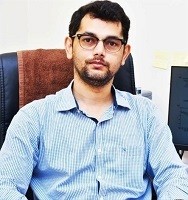 Vishal Govind Rao joined the Department of Chemistry at the Indian Institute of Technology, Kanpur, in 2019 as an Assistant Professor. Previously he was a postdoctoral fellow in the Department of Chemical Engineering at the University of Michigan and the Department of Photochemical Sciences at Bowling Green State University. He received his Ph.D. in 2013 from the Department of Chemistry, Indian Institute of Technology, Kharagpur. His lab seeks to understand the fundamental properties of photocatalytic materials that affect their catalytic efficiency. His main research interest is plasmonic photocatalysis, interfacial charge transfer dynamics, efficient solar energy utilization strategies, and carbon dioxide reduction into hydrocarbon fuels. He specializes in time-resolved and single-molecule spectroscopy, Raman spectroscopy, interface science and materials chemistry.
Vishal Govind Rao joined the Department of Chemistry at the Indian Institute of Technology, Kanpur, in 2019 as an Assistant Professor. Previously he was a postdoctoral fellow in the Department of Chemical Engineering at the University of Michigan and the Department of Photochemical Sciences at Bowling Green State University. He received his Ph.D. in 2013 from the Department of Chemistry, Indian Institute of Technology, Kharagpur. His lab seeks to understand the fundamental properties of photocatalytic materials that affect their catalytic efficiency. His main research interest is plasmonic photocatalysis, interfacial charge transfer dynamics, efficient solar energy utilization strategies, and carbon dioxide reduction into hydrocarbon fuels. He specializes in time-resolved and single-molecule spectroscopy, Raman spectroscopy, interface science and materials chemistry.
Lab webpage
Alannah Hallas, PhD, University of British Columbia, Canada
orcid.org/0000-0002-0892-0982
Research areas: quantum materials, crystal growth, magnetism
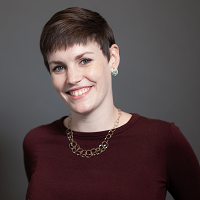
Lab webpage
Toru Hirahara, PhD, Tokyo Institute of Technology, Japan
orcid.org/0000-0002-2574-1708
Research areas: topological materials, surface and nano physics
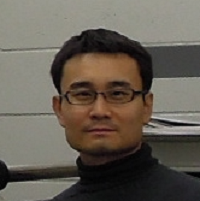 Toru Hirahara is an associate professor at the Department of Physics, Tokyo Institute of Technology. He obtained his Ph.D in physics from the University of Tokyo in 2008. He continued to work as an assistant professor (research associate) at the University of Tokyo before moving to Tokyo Tech. as a principal investigator in 2014. His research interests include surface/nano physics, topological materials, quantum Dirac systems, and thin film growth. The goal of his research is to develop novel ultrathin materials and understand the quantum physical phenomena, such as superconductivity, magnetism, and topological properties as well as their interplay at the atomic scale.
Toru Hirahara is an associate professor at the Department of Physics, Tokyo Institute of Technology. He obtained his Ph.D in physics from the University of Tokyo in 2008. He continued to work as an assistant professor (research associate) at the University of Tokyo before moving to Tokyo Tech. as a principal investigator in 2014. His research interests include surface/nano physics, topological materials, quantum Dirac systems, and thin film growth. The goal of his research is to develop novel ultrathin materials and understand the quantum physical phenomena, such as superconductivity, magnetism, and topological properties as well as their interplay at the atomic scale.
Lab webpage
Rostislav Hrubiak, PhD, Argonne National Laboratory, USA
orcid.org/0000-0002-1489-2156
Research areas: high-pressure, materials science, X-ray science and technology
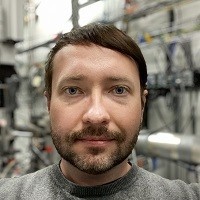 Rostislav Hrubiak is a staff scientist at the High Pressure Collaborative Access Team (HPCAT) synchrotron facility, X-Ray Science Division of the Argonne National Laboratory. He received a Ph.D. in Materials Science and Engineering from the Florida International University in 2012. He was a postdoctoral researcher, and later a research scientist, at the Carnegie Institution for Science before joining the Argonne National Laboratory as staff scientist in 2018. His research interests are focused on understanding the physical process of materials at ultrahigh pressure and temperature conditions, high pressure phase transitions, melting, materials synthesis, viscosity, and elastic properties. He is also responsible for research and development efforts including developing user programs for the HPCAT synchrotron facility, promoting the developed/established techniques to large user communities, and supporting the HPCAT user program.
Rostislav Hrubiak is a staff scientist at the High Pressure Collaborative Access Team (HPCAT) synchrotron facility, X-Ray Science Division of the Argonne National Laboratory. He received a Ph.D. in Materials Science and Engineering from the Florida International University in 2012. He was a postdoctoral researcher, and later a research scientist, at the Carnegie Institution for Science before joining the Argonne National Laboratory as staff scientist in 2018. His research interests are focused on understanding the physical process of materials at ultrahigh pressure and temperature conditions, high pressure phase transitions, melting, materials synthesis, viscosity, and elastic properties. He is also responsible for research and development efforts including developing user programs for the HPCAT synchrotron facility, promoting the developed/established techniques to large user communities, and supporting the HPCAT user program.
Personal webpage
Sunkook Kim, PhD, Sungkyunkwan University, South Korea
orcid.org/0000-0003-1747-4539
Research areas: 2D materials nanodevices, flexible electronics, thin-film transistors, augmented human electronics
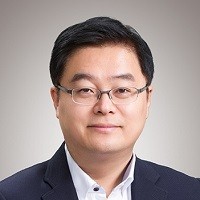 Sunkook Kim is an Associate Professor in the Department of Advanced Materials Science & Engineering, Sungkyunkwan University (SKKU). He earned his Ph.D in Electrical and Computer Engineering at Purdue University in 2009, and worked in Intel and Samsung Electronics in 2012. His research interests include a large-area synthesis of 2D materials, high-mobility thin-film transistors, wearable electronics and human-digital interactive sensors. He received the Young Scientist Award from Korean President in 2015 and Display Challenger Award (Foldable OLED Display) from Samsung Electronics in 2010.
Sunkook Kim is an Associate Professor in the Department of Advanced Materials Science & Engineering, Sungkyunkwan University (SKKU). He earned his Ph.D in Electrical and Computer Engineering at Purdue University in 2009, and worked in Intel and Samsung Electronics in 2012. His research interests include a large-area synthesis of 2D materials, high-mobility thin-film transistors, wearable electronics and human-digital interactive sensors. He received the Young Scientist Award from Korean President in 2015 and Display Challenger Award (Foldable OLED Display) from Samsung Electronics in 2010.
Lab webpage
Xiaoyan Li, PhD, Tsinghua University, China
orcid.org/0000-0002-2953-9267
Research areas: micro- and nano-structured materials, solid mechanics, multiscale modelling
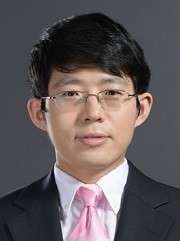 Xiaoyan Li received his Ph.D. degree from Brown University in 2012. He is currently a tenured Associate Professor in the Department of Engineering Mechanics, Tsinghua University. His research interests include deformation and fracture of micro- and nano-structured materials (including nanocrystalline and nanotwinned materials, low-dimensional nanomaterials and energy storage materials), design, fabrication and mechanics of high entropy alloys and metamaterials, and development of multiscale modelling. He received the Extreme Mechanics Letters Young Investigator Award in 2018 and the Eshelby Mechanics Award for Young Faculty in 2018.
Xiaoyan Li received his Ph.D. degree from Brown University in 2012. He is currently a tenured Associate Professor in the Department of Engineering Mechanics, Tsinghua University. His research interests include deformation and fracture of micro- and nano-structured materials (including nanocrystalline and nanotwinned materials, low-dimensional nanomaterials and energy storage materials), design, fabrication and mechanics of high entropy alloys and metamaterials, and development of multiscale modelling. He received the Extreme Mechanics Letters Young Investigator Award in 2018 and the Eshelby Mechanics Award for Young Faculty in 2018.
Lab webpage
Daniela Loessner, PhD, Monash University, Australia
orcid.org/0000-0001-5891-3441
Research areas: Tissue engineering, precision medicine, 3D cancer models
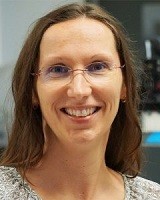 Daniela Loessner has a background in biology, graduating with a PhD in Natural Sciences from the Technical University of Munich. From 2007 to 2017 she was a Postdoctoral Researcher, Lecturer and Senior Lecturer at Queensland University of Technology. In 2017 she joined the Barts Cancer Institute at Queen Mary University of London as a Reader in Bioengineering and Cancer. Daniela moved to Monash University in 2020 with a multi-departmental appointment, and leads the 3D Cancer Models Team. She holds a joint appointment at the Faculty of Engineering and Faculty of Medicine, Nursing and Health Sciences, enabling her research at the interface of tissue engineering, biomaterials and cell biology. Her research is on the role of the extracellular and cellular microenvironment in modulating cancer progression and therapy response by applying tissue-engineered technologies.
Daniela Loessner has a background in biology, graduating with a PhD in Natural Sciences from the Technical University of Munich. From 2007 to 2017 she was a Postdoctoral Researcher, Lecturer and Senior Lecturer at Queensland University of Technology. In 2017 she joined the Barts Cancer Institute at Queen Mary University of London as a Reader in Bioengineering and Cancer. Daniela moved to Monash University in 2020 with a multi-departmental appointment, and leads the 3D Cancer Models Team. She holds a joint appointment at the Faculty of Engineering and Faculty of Medicine, Nursing and Health Sciences, enabling her research at the interface of tissue engineering, biomaterials and cell biology. Her research is on the role of the extracellular and cellular microenvironment in modulating cancer progression and therapy response by applying tissue-engineered technologies.
Lab webpage
Reinhard Maurer, PhD, University of Warwick, UK
orcid.org/0000-0002-3004-785X
Research areas: dynamics at surfaces, machine learning, photoelectrocatalysis
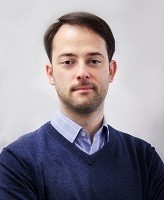 Reinhard Maurer is an Associate Professor of Computational Chemistry at the University of Warwick. He received a Diploma degree in Computational Chemistry from the University of Graz (Austria) in 2010 and a Ph.D. in Chemistry in 2014 from the Technical University Munich (Germany). He was a postdoctoral researcher at Yale University before starting his independent career in 2017. His research interests include non-thermal chemical dynamics at surfaces, molecular device design, and the development of machine learning and first-principles methods to study problems in heterogeneous catalysis and surface science. He received the TU Munich President’s Young Investigator Award in 2016 and was a Runner-Up for the Psi-K Volker Heine Early Career Award in 2018.
Reinhard Maurer is an Associate Professor of Computational Chemistry at the University of Warwick. He received a Diploma degree in Computational Chemistry from the University of Graz (Austria) in 2010 and a Ph.D. in Chemistry in 2014 from the Technical University Munich (Germany). He was a postdoctoral researcher at Yale University before starting his independent career in 2017. His research interests include non-thermal chemical dynamics at surfaces, molecular device design, and the development of machine learning and first-principles methods to study problems in heterogeneous catalysis and surface science. He received the TU Munich President’s Young Investigator Award in 2016 and was a Runner-Up for the Psi-K Volker Heine Early Career Award in 2018.
Lab webpage
Eun Soo Park, PhD, Seoul National University, South Korea
orcid.org/0000-0001-8520-2012
Research areas: Physical metallurgy, alloy design, high entropy alloys, metallic glasses
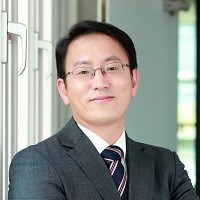 Eun Soo Park is a Professor in the Department of Materials Science and Engineering and a director of the Center for Self-Healing Materials at Seoul National University. He received his Ph.D. in Metallurgical Engineering from Yonsei University, Korea in 2005 and worked as a postdoctoral fellow in the Department of Applied Physics at Harvard University from 2006 to 2008. His research interests are in the tailor-made design and synthesis of advanced engineering alloys and composites for extreme conditions as well as the physical understanding of phase transformations, microstructure evolution, and deformation mechanisms in metallic materials (including bulk metallic glasses, quasicrystals, high-entropy alloys, and self-healing metals). He received the TMS SMD Young Leaders Professional Development Award (US, 2016) and a Prime Minister’s Commendation for Innovative Inventions (Korea, 2019).
Eun Soo Park is a Professor in the Department of Materials Science and Engineering and a director of the Center for Self-Healing Materials at Seoul National University. He received his Ph.D. in Metallurgical Engineering from Yonsei University, Korea in 2005 and worked as a postdoctoral fellow in the Department of Applied Physics at Harvard University from 2006 to 2008. His research interests are in the tailor-made design and synthesis of advanced engineering alloys and composites for extreme conditions as well as the physical understanding of phase transformations, microstructure evolution, and deformation mechanisms in metallic materials (including bulk metallic glasses, quasicrystals, high-entropy alloys, and self-healing metals). He received the TMS SMD Young Leaders Professional Development Award (US, 2016) and a Prime Minister’s Commendation for Innovative Inventions (Korea, 2019).
Lab webpage
Yanzhong Pei, PhD, Tongji University, China
orcid.org/0000-0003-1612-3294
Research areas: thermoelectrics, transport properties
 Yanzhong Pei is a Professor of Materials Science and Engineering at Tongji University, China. He holds a B.E. from Central South University in China, a Ph.D from the Shanghai Institute of Ceramics, CAS, and postdoctoral research experience for about 5 years from Michigan State University and the California Institute of Technology. He has been working on advanced thermoelectric semiconductors for about 2 decades, from synthesizing the materials to understanding the underlying physics and chemistry. His interests include materials physics and chemistry for energy applications. He received both 2013 Young Investigator and 2007 Goldsmid Awards from the International Thermoelectric Society.
Yanzhong Pei is a Professor of Materials Science and Engineering at Tongji University, China. He holds a B.E. from Central South University in China, a Ph.D from the Shanghai Institute of Ceramics, CAS, and postdoctoral research experience for about 5 years from Michigan State University and the California Institute of Technology. He has been working on advanced thermoelectric semiconductors for about 2 decades, from synthesizing the materials to understanding the underlying physics and chemistry. His interests include materials physics and chemistry for energy applications. He received both 2013 Young Investigator and 2007 Goldsmid Awards from the International Thermoelectric Society.
Lab webpage
Nicola Poccia, PhD, IFW-Dresden, Germany
orcid.org/0000-0001-7982-0113
Research areas: Nanoscale superconductivity, Topological superconductivity, Low-dimensional superconductivity
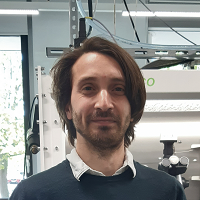 Nicola Poccia is a Group Leader of the “Superpuddles Lab” at the Institute for Metallic Materials of the IFW-Dresden. He received his "Laurea" in physics at the Sapienza University of Rome and received his Ph.D. in Physics from Sapienza University. He was Marie Curie Fellow at the University of Twente and at the European Synchrotron Radiation Facility in Grenoble, then joined as postdoctoral fellow the Department of Physics at Harvard University. His laboratory focuses in the two-dimensional materials and heterostructures of superconductors in complex quantum matter. In our lab we synthetize and isolate atomically thin superconductors, assemble these materials into novel multicomponent system and quantitatively interrogate them by means of electronic quantum transport and synchrotron radiation microscopies. Nicola recently received funding for his research from the DFG.
Nicola Poccia is a Group Leader of the “Superpuddles Lab” at the Institute for Metallic Materials of the IFW-Dresden. He received his "Laurea" in physics at the Sapienza University of Rome and received his Ph.D. in Physics from Sapienza University. He was Marie Curie Fellow at the University of Twente and at the European Synchrotron Radiation Facility in Grenoble, then joined as postdoctoral fellow the Department of Physics at Harvard University. His laboratory focuses in the two-dimensional materials and heterostructures of superconductors in complex quantum matter. In our lab we synthetize and isolate atomically thin superconductors, assemble these materials into novel multicomponent system and quantitatively interrogate them by means of electronic quantum transport and synchrotron radiation microscopies. Nicola recently received funding for his research from the DFG.
Lab webpage
Natalia Shustova, PhD, University of South Carolina, USA
orcid.org/0000-0003-3952-1949
Research areas: Metal- and covalent-organic frameworks, stimuli-responsive materials, photophysics
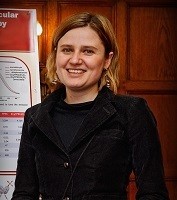 Natalia B. Shustova received her M.S. degree in Materials Science from Moscow State University and holds two Ph.D. degrees, from Moscow State University (physical chemistry) and Colorado State University (inorganic chemistry). She then completed postdoctoral research at the Massachusetts Institute of Technology. Currently, she is a McCausland Professor at the University of South Carolina. During her independent career, she has received various awards, including the National Science Foundation CAREER Award, USC Breakthrough Scholar Award, Cottrell Scholar Award, the Alfred P. Sloan Research Award, IAS Hans Fischer Fellowship, and the Dreyfus Teaching Scholar Award. She has also been named a Scialog Fellow of the Research Corporation for Science Advancement, which accelerates 21st century transformational science through research, dialog, and community outreach.
Natalia B. Shustova received her M.S. degree in Materials Science from Moscow State University and holds two Ph.D. degrees, from Moscow State University (physical chemistry) and Colorado State University (inorganic chemistry). She then completed postdoctoral research at the Massachusetts Institute of Technology. Currently, she is a McCausland Professor at the University of South Carolina. During her independent career, she has received various awards, including the National Science Foundation CAREER Award, USC Breakthrough Scholar Award, Cottrell Scholar Award, the Alfred P. Sloan Research Award, IAS Hans Fischer Fellowship, and the Dreyfus Teaching Scholar Award. She has also been named a Scialog Fellow of the Research Corporation for Science Advancement, which accelerates 21st century transformational science through research, dialog, and community outreach.
Lab webpage
Hairen Tan, PhD, Nanjing University, China
orcid.org/0000-0003-0821-476X
Research areas: Solar cells, metal halide perovskites, renewable energy
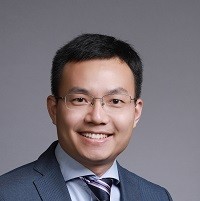 Hairen Tan is a Professor in the College of Engineering and Applied Sciences at Nanjing University. He obtained his PhD degree in the Department of Electrical Sustainable Energy at Delft University of Technology in 2015, Master of Science in Material Physics and Chemistry at the Institute of Semiconductors, Chinese Academy of Sciences, and his Bachelor of Engineering in Materials at Central South University. After graduation he was awarded the Rubicon Fellowship and joined Ted Sargent’s group at University of Toronto as a postdoctoral fellow during 2015-2018. His research focuses on developing high-efficiency and cost-effective photovoltaic devices, including perovskite solar cells, silicon solar cells, and perovskite-based tandem solar cells.
Hairen Tan is a Professor in the College of Engineering and Applied Sciences at Nanjing University. He obtained his PhD degree in the Department of Electrical Sustainable Energy at Delft University of Technology in 2015, Master of Science in Material Physics and Chemistry at the Institute of Semiconductors, Chinese Academy of Sciences, and his Bachelor of Engineering in Materials at Central South University. After graduation he was awarded the Rubicon Fellowship and joined Ted Sargent’s group at University of Toronto as a postdoctoral fellow during 2015-2018. His research focuses on developing high-efficiency and cost-effective photovoltaic devices, including perovskite solar cells, silicon solar cells, and perovskite-based tandem solar cells.
Lab webpage
Klaas-Jan Tielrooij, PhD, Eindhoven University of Technology, Netherlands
orcid.org/0000-0002-0055-6231
Research areas: ultrafast dynamics, light-matter interaction, optoelectronics
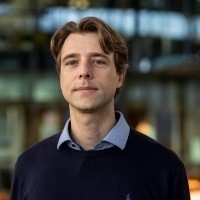 Klaas-Jan Tielrooij is an Associate Professor at Eindhoven University of Technology, the Netherlands, and Senior Group Leader at the Catalan Institute of Nanoscience and Nanotechnology (ICN2) in Barcelona, Spain. He leads a research group called Ultrafast Dynamics in Nanoscale Systems. Previously, he was visiting professor in Mainz, Germany, and research fellow at the Institute of Photonic Sciences (ICFO) in Spain. He obtained his Ph.D. from the University of Amsterdam, the Netherlands, for which he received the FOM Physics Thesis Prize 2011. His main interests are in the field of ultrafast dynamics, optoelectronics, nonlinear optics, terahertz technologies, light-matter interaction and two-dimensional quantum materials.
Klaas-Jan Tielrooij is an Associate Professor at Eindhoven University of Technology, the Netherlands, and Senior Group Leader at the Catalan Institute of Nanoscience and Nanotechnology (ICN2) in Barcelona, Spain. He leads a research group called Ultrafast Dynamics in Nanoscale Systems. Previously, he was visiting professor in Mainz, Germany, and research fellow at the Institute of Photonic Sciences (ICFO) in Spain. He obtained his Ph.D. from the University of Amsterdam, the Netherlands, for which he received the FOM Physics Thesis Prize 2011. His main interests are in the field of ultrafast dynamics, optoelectronics, nonlinear optics, terahertz technologies, light-matter interaction and two-dimensional quantum materials.
Lab webpage
Milica Todorović, PhD, University of Turku, Finland
orcid.org/0000-0003-0028-0105
Research areas: ab initio simulations, artificial intelligence, organic/inorganic interfaces
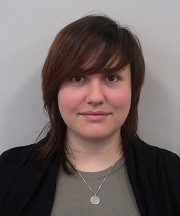 Milica Todorović is an Assistant Professor in Materials Engineering at the Department of Mechanical and Materials Engineering, University of Turku. She gained an MSci in Physics at University College London, followed by a DPhil in Materials Science from Merton College at the University of Oxford. She went on to specialise in development and high performance computing applications of large-scale first principles calculations at the National Institute for Materials Science, Japan, and scanning probe microscopy simulations at Universidad Autonoma de Madrid before settling in Finland. Her research focuses on interfacing artificial intelligence algorithms with first principles simulations of materials with the aim to optimise material functionality.
Milica Todorović is an Assistant Professor in Materials Engineering at the Department of Mechanical and Materials Engineering, University of Turku. She gained an MSci in Physics at University College London, followed by a DPhil in Materials Science from Merton College at the University of Oxford. She went on to specialise in development and high performance computing applications of large-scale first principles calculations at the National Institute for Materials Science, Japan, and scanning probe microscopy simulations at Universidad Autonoma de Madrid before settling in Finland. Her research focuses on interfacing artificial intelligence algorithms with first principles simulations of materials with the aim to optimise material functionality.
Lab webpage
Haotian Wang, PhD, Rice University, USA
orcid.org/0000-0002-3552-8978
Research areas: Electrocatalysis, renewable energy, nanomaterials
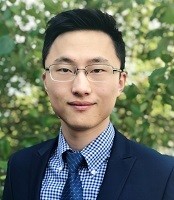
Lab webpage
Shun Watanabe, PhD, University of Tokyo, Japan
orcid.org/0000-0001-7377-6043
Research areas: Polymers, organic semiconductors, thin-film devices
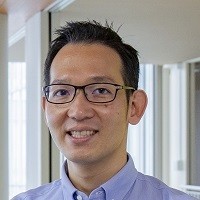 Shun Watanabe is an Associate Professor in the Department of Advanced Materials Science at the University of Tokyo. He received his PhD in materials science from Nagoya University in 2011, then carried out postdoctoral research on charge and spin transport physics in organic semiconductors at the University of Cambridge. In 2016, he started his independent research career at the University of Tokyo as principal investigator. His research focuses on materials science in solution-processable organic semiconductors and condensed matter physics, with the goal of potential applications in printable optoelectronic devices.
Shun Watanabe is an Associate Professor in the Department of Advanced Materials Science at the University of Tokyo. He received his PhD in materials science from Nagoya University in 2011, then carried out postdoctoral research on charge and spin transport physics in organic semiconductors at the University of Cambridge. In 2016, he started his independent research career at the University of Tokyo as principal investigator. His research focuses on materials science in solution-processable organic semiconductors and condensed matter physics, with the goal of potential applications in printable optoelectronic devices.
Lab webpage
Jie Xiao, PhD, Pacific Northwest National Laboratory, USA
orcid.org/0000-0002-5520-5439
Research areas: batteries, electrochemical energy storage, electrochemistry
 Jie Xiao is a Laboratory Fellow and Group Leader in the Battery Materials & Systems group at Pacific Northwest National Laboratory. She obtained her Ph.D degree in materials chemistry from State University of New York at Binghamton. Her research interests range from materials synthesis and electrochemical kinetics to cell design and fabrication, with the goal of understanding synthesis-structure-performance relationships and their underlying reaction mechanisms at the atomic level and in realistic systems. She is the recipient of awards such as Distinguished Inventor of Battelle, The Electrochemical Society Battery Division Technology Award, Federal Laboratory Consortium Award for Excellence in Technology Transfer and Young Researcher Award from International Automotive Lithium Battery Association etc.
Jie Xiao is a Laboratory Fellow and Group Leader in the Battery Materials & Systems group at Pacific Northwest National Laboratory. She obtained her Ph.D degree in materials chemistry from State University of New York at Binghamton. Her research interests range from materials synthesis and electrochemical kinetics to cell design and fabrication, with the goal of understanding synthesis-structure-performance relationships and their underlying reaction mechanisms at the atomic level and in realistic systems. She is the recipient of awards such as Distinguished Inventor of Battelle, The Electrochemical Society Battery Division Technology Award, Federal Laboratory Consortium Award for Excellence in Technology Transfer and Young Researcher Award from International Automotive Lithium Battery Association etc.
Lab webpage
Cang Zhao, PhD, Tsinghua University, China
orcid.org/0000-0002-2464-2409
Research areas: Metal additive manufacturing, high-speed synchrotron and neutron characterization
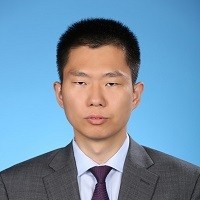 Cang Zhao is an Assistant Professor in the Department of Mechanical Engineering at Tsinghua University. He received his Ph.D. degree in Structural Engineering from the University of California, San Diego in 2015, his master’s degree in Condensed Matter Physics from the University of Science and Technology of China in 2011, and his bachelor’s degree in Materials Science and Engineering from the University of Science and Technology Beijing in 2009. Prior to his current position, he worked as a postdoctoral researcher at the Advanced Photon Source, Argonne National Laboratory, from 2016 to 2019. His current research focuses on understanding and controlling microstructures and defects in metal 3D printing.
Cang Zhao is an Assistant Professor in the Department of Mechanical Engineering at Tsinghua University. He received his Ph.D. degree in Structural Engineering from the University of California, San Diego in 2015, his master’s degree in Condensed Matter Physics from the University of Science and Technology of China in 2011, and his bachelor’s degree in Materials Science and Engineering from the University of Science and Technology Beijing in 2009. Prior to his current position, he worked as a postdoctoral researcher at the Advanced Photon Source, Argonne National Laboratory, from 2016 to 2019. His current research focuses on understanding and controlling microstructures and defects in metal 3D printing.
Lab webpage
